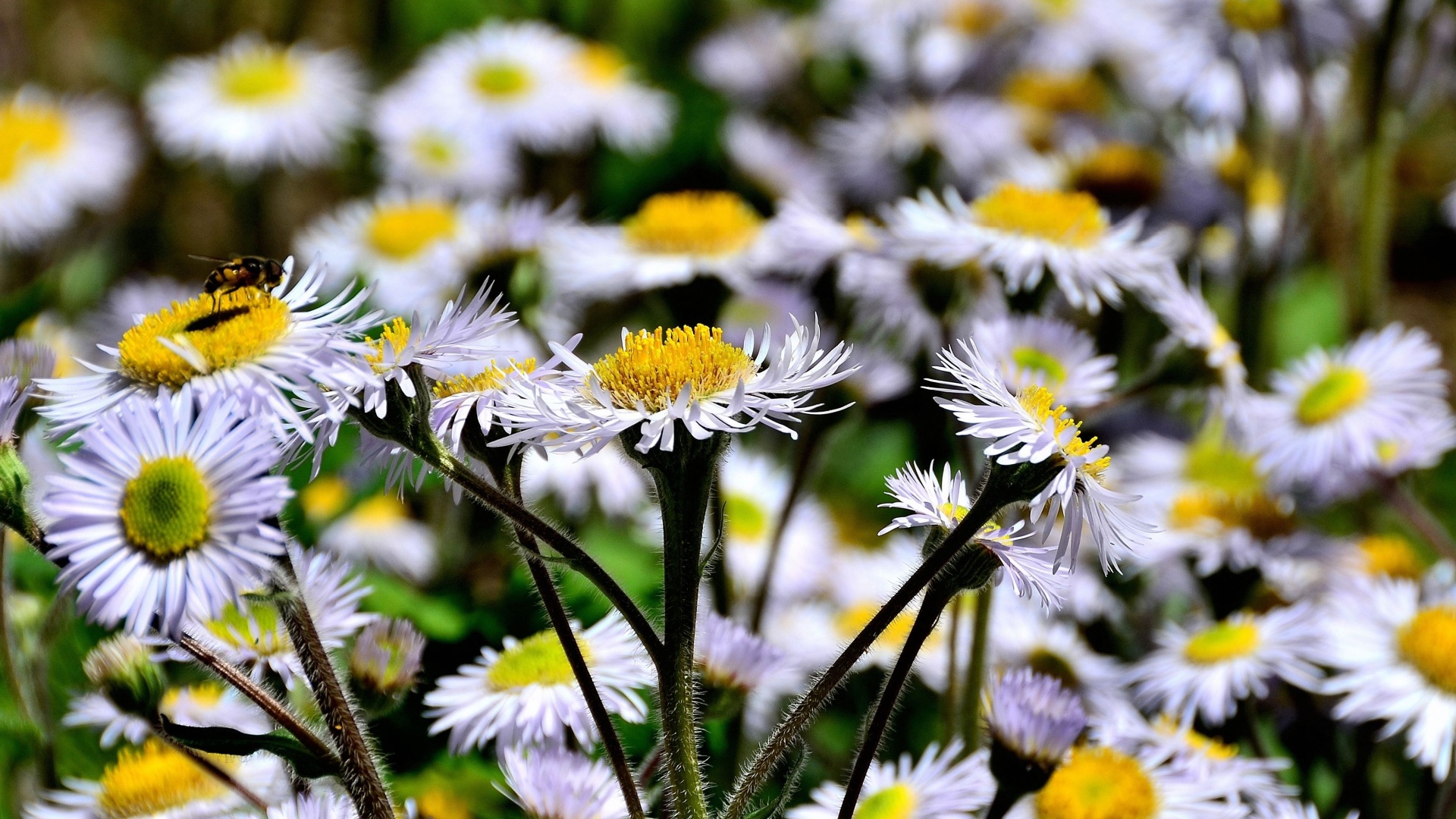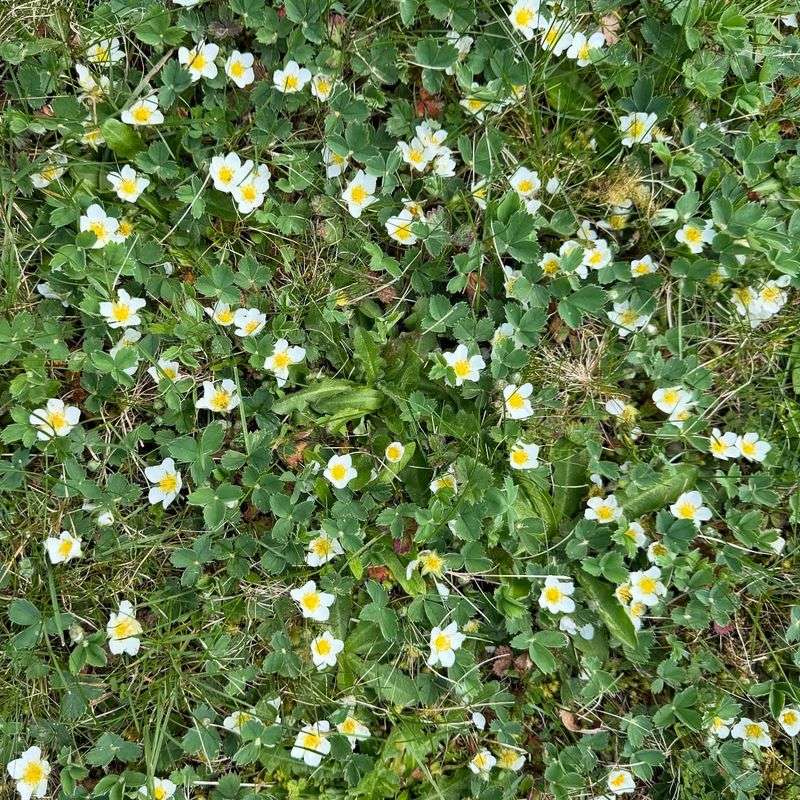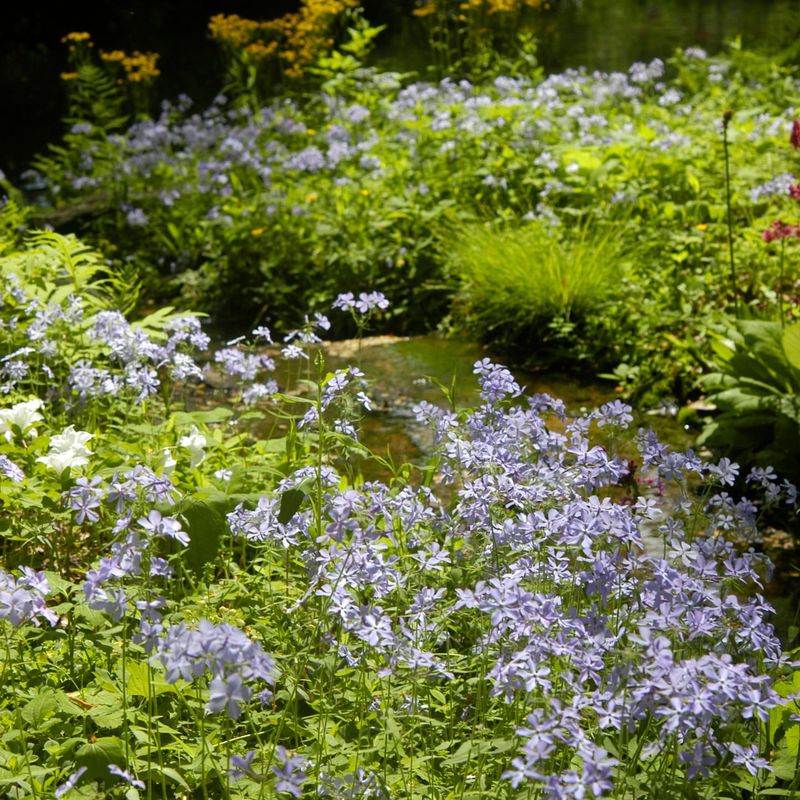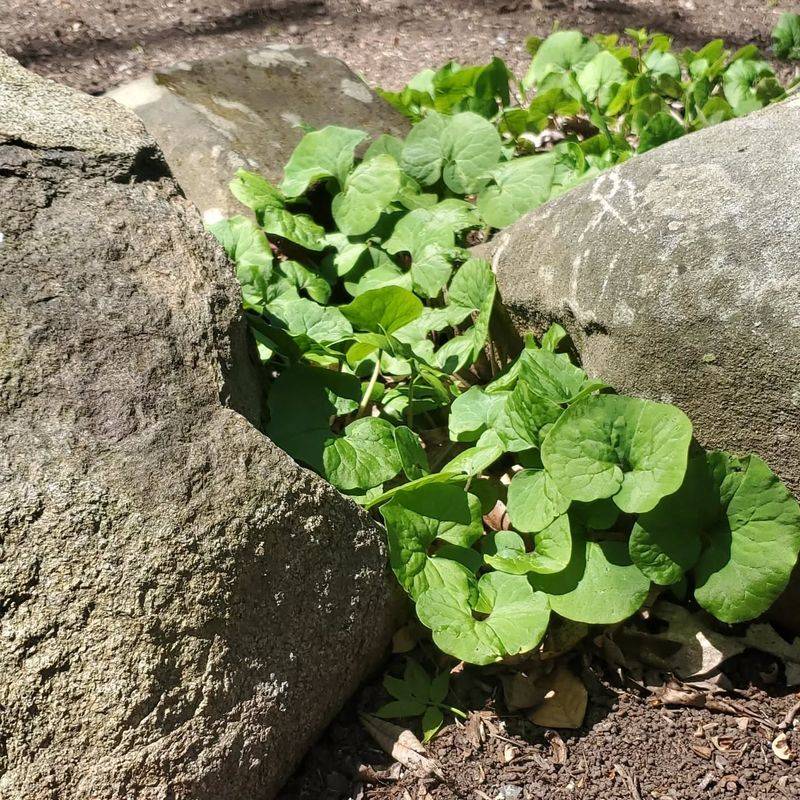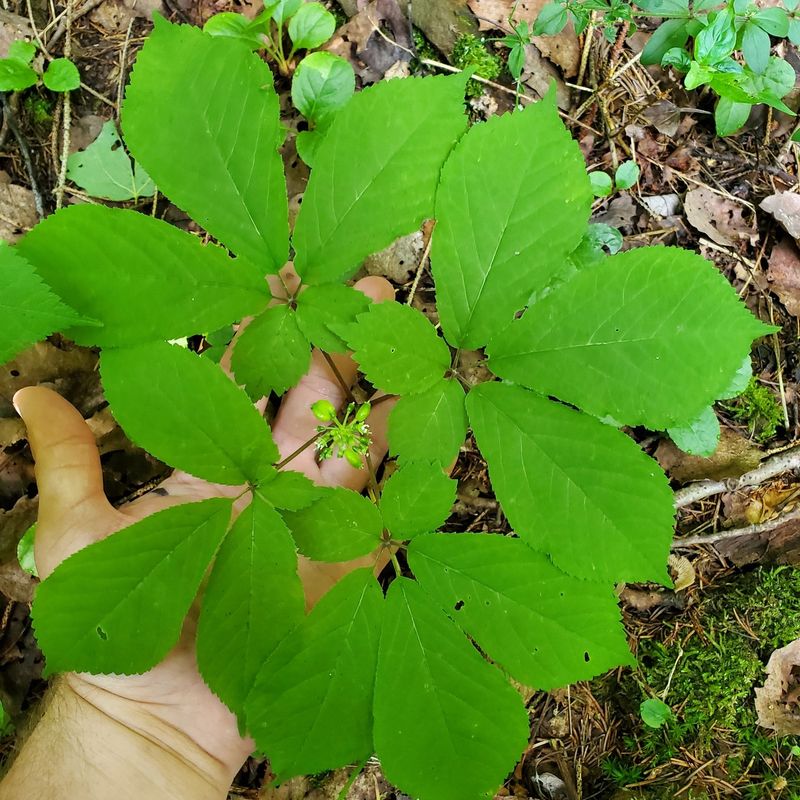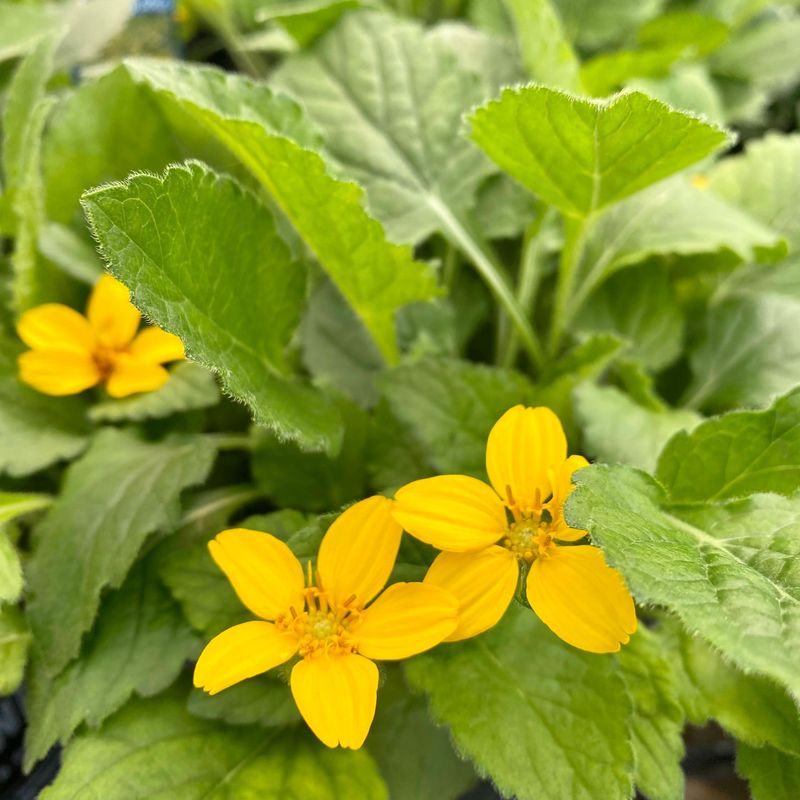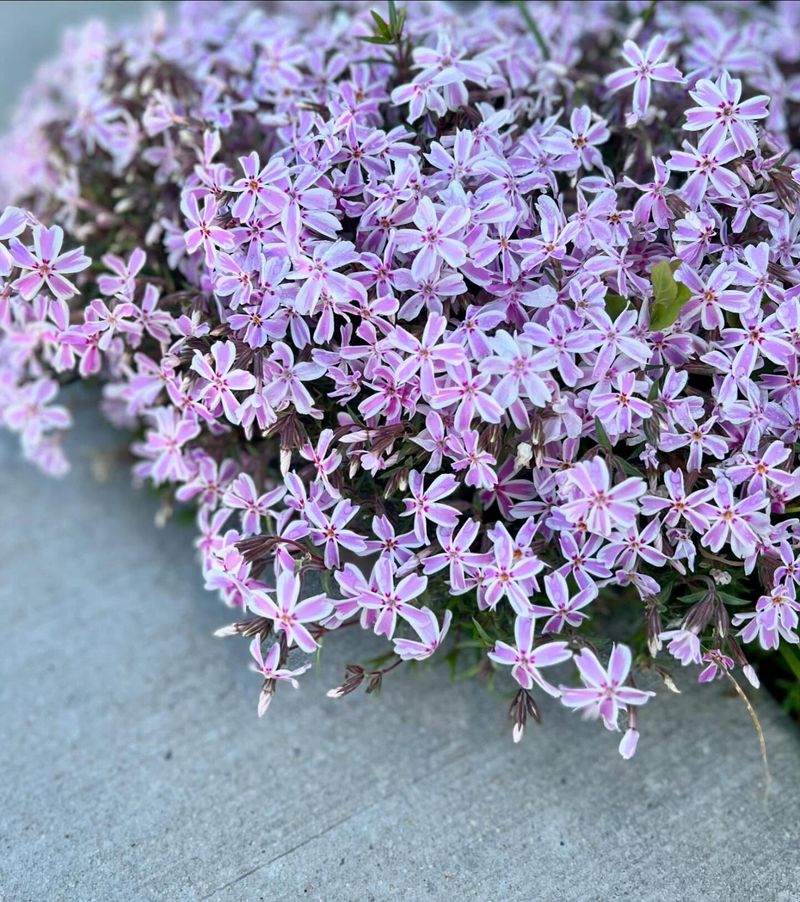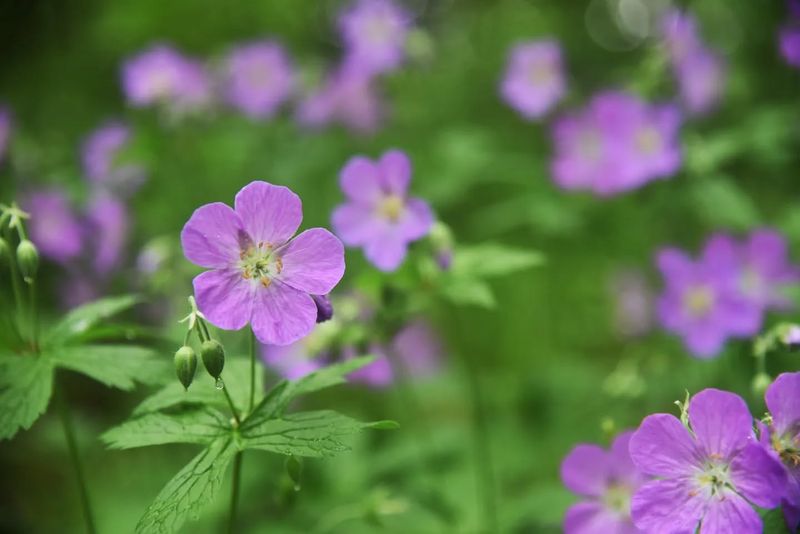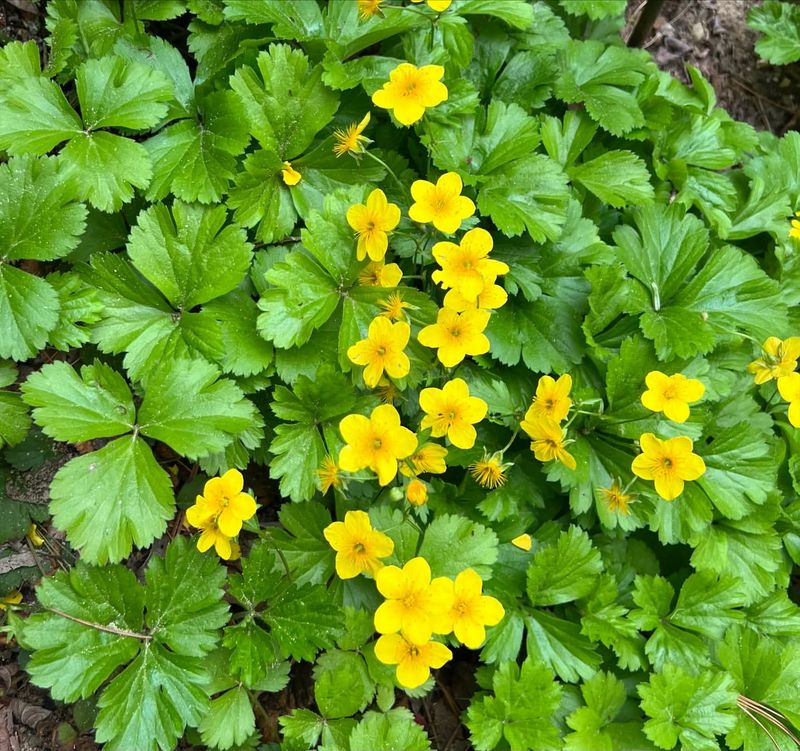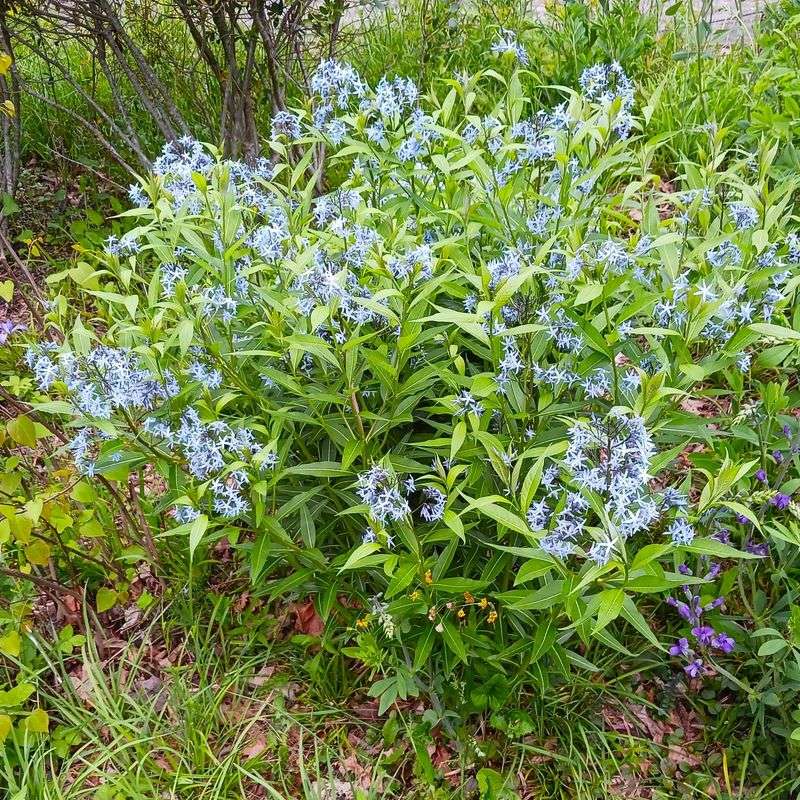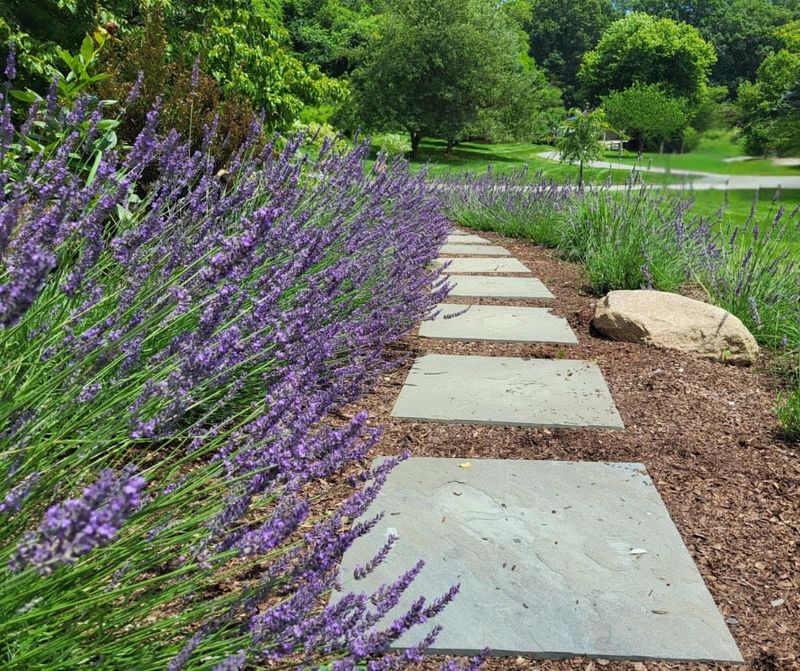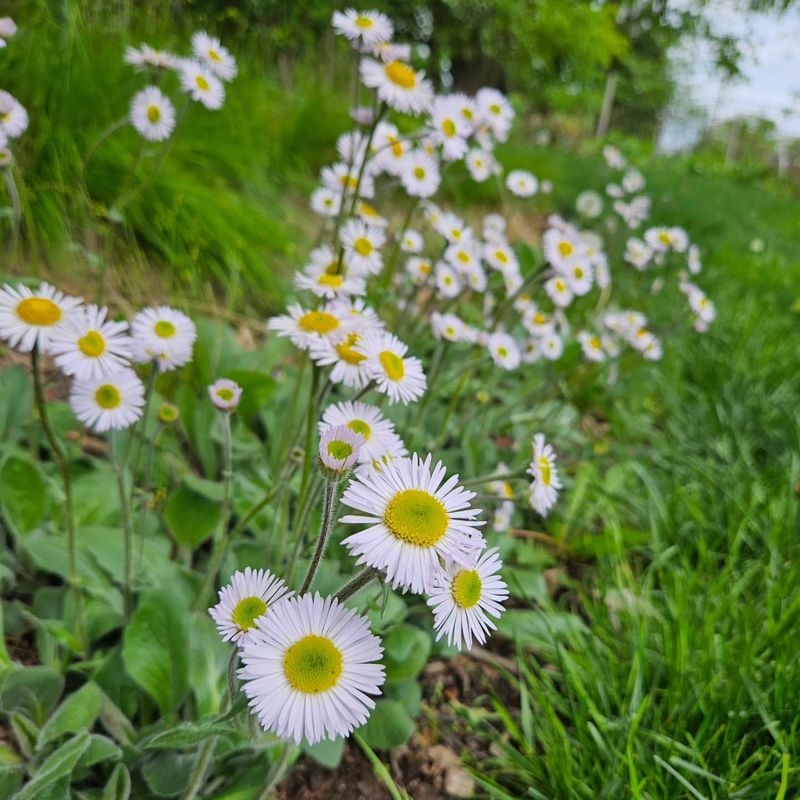Pennsylvania gardens can become vibrant ecosystems when planted with native groundcovers that support local insects. These low-growing plants spread across the soil, preventing erosion while providing essential food for bees, butterflies, and other beneficial bugs.
Adding these native options to your garden helps rebuild the food web and creates a more sustainable landscape right in your own backyard.
1. Wild Strawberry (Fragaria virginiana)
Delicate white flowers transform into tiny, sweet red berries that both birds and humans treasure. In Pennsylvania gardens, wild strawberry forms a dense mat of attractive trifoliate leaves that turn a rich red in fall.
Spreading by runners, it quickly fills bare spots in sunny to partly shaded areas. Beyond the delicious berries, the spring flowers provide vital nectar for small native bees and butterflies when other food sources are still scarce.
2. Golden Ragwort (Packera aurea)
Bursting with clusters of sunny yellow daisy-like flowers in spring, golden ragwort brings early-season cheer while feeding countless pollinators. The heart-shaped basal leaves form an attractive evergreen rosette that suppresses weeds year-round.
Happy in moist woodland edges or rain gardens, this adaptable plant tolerates clay soil and deer typically leave it alone. Caterpillars of several butterfly species munch on the foliage, making it a true wildlife supporter.
3. Pennsylvania Sedge (Carex pensylvanica)
Fountain-like tufts of fine, arching leaves create a lush carpet that resembles a traditional lawn but requires no mowing. Pennsylvania sedge thrives in dry shade where grass struggles, including under trees and along woodland edges.
Early spring brings subtle flowers that provide pollen for native bees. The foliage hosts caterpillars of several skipper butterfly species, while the seeds feed ground-foraging birds. A truly versatile native that solves many challenging garden spots.
4. Woodland Phlox (Phlox divaricata)
Clouds of fragrant lavender-blue flowers float above semi-evergreen foliage in spring, creating a dreamy Pennsylvania woodland scene. Hummingbird moths and butterflies hover around the sweetly scented blooms, sipping nectar from the delicate petals.
Woodland phlox, a native favorite in Pennsylvania gardens, gradually forms colonies in dappled shade, pairing beautifully with ferns and spring ephemerals. The flowers’ long tubes are perfect for long-tongued pollinators like sphinx moths and swallowtail butterflies that can reach the hidden nectar.
5. Wild Ginger (Asarum canadense)
Heart-shaped, velvety leaves create a plush green carpet in shady spots, hiding unusual maroon flowers that bloom at ground level. These strange blooms are pollinated by ants and small flies, showing how specialized native plant relationships can be.
Wild ginger spreads slowly but steadily to form dense colonies that effectively suppress weeds. The leaves release a pleasant, spicy fragrance when crushed. Though not related to culinary ginger, this woodland gem provides habitat for small beneficial insects.
6. Partridgeberry (Mitchella repens)
Trailing evergreen stems adorned with round, dark green leaves create a living tapestry across the Pennsylvania forest floor. Tiny white, trumpet-shaped flowers appear in pairs in late spring, followed by bright red berries that often last through winter.
Each berry forms from two fused flowers—a clever bit of natural design. Partridgeberry thrives in the acidic woodland soil found beneath Pennsylvania’s pines and oaks. The delicate flowers attract small native bees and flies, while the berries offer crucial winter food for birds when other sources are scarce.
7. Foamflower (Tiarella cordifolia)
Frothy white flower spikes rise above maple-like leaves in spring, resembling delicate foam floating above the woodland floor. Bees and hover flies flock to these airy blooms, gathering pollen and nectar during the critical spring season.
The lobed leaves often display attractive burgundy veining and may turn bronze in fall. Foamflower forms a semi-evergreen mat that suppresses weeds while providing year-round interest. Some varieties send out runners to form colonies, while others grow in tidy clumps.
8. Green-and-Gold (Chrysogonum virginianum)
Star-shaped yellow flowers dot this cheerful Pennsylvania native groundcover from spring through fall, offering months of feeding opportunities for pollinators. The vibrant blooms stand out against fuzzy, emerald-green leaves that form a dense, weed-suppressing mat.
Green-and-gold thrives in both sun and shade, making it a versatile choice for many Pennsylvania garden settings. Bees are especially drawn to its long-lasting flowers. Spreading by underground runners, it forms tidy colonies while remaining well-behaved in the landscape.
9. Creeping Phlox (Phlox stolonifera)
Carpets of vibrant purple, pink, or white flowers blanket this semi-evergreen groundcover in spring, creating a spectacular display that draws in butterflies and bumblebees. Unlike its cousin woodland phlox, creeping phlox forms a denser mat through spreading stolons.
The glossy, oval leaves remain attractive long after the flowering show ends. Perfect for sunny border edges or spilling over walls and slopes. The plant’s stoloniferous growth habit helps it quickly colonize bare areas, preventing erosion on slopes.
10. Wild Geranium (Geranium maculatum)
Soft lavender-pink flowers dance above deeply cut foliage each spring in Pennsylvania woodlands, drawing native bees and beneficial insects. Wild geranium gradually forms colonies along woodland edges and openings, spreading through both self-seeding and slow rhizome growth.
Its attractive foliage often takes on burgundy tones in fall before dying back for winter. This versatile plant bridges the gap between groundcover and wildflower. Its seeds feed small mammals and birds, while the leaves support caterpillars of several moth species native to Pennsylvania.
11. Barren Strawberry (Waldsteinia fragarioides)
Yellow buttercup-like flowers brighten spring gardens, hovering above strawberry-like evergreen leaves that form a dense, weed-smothering carpet. Despite its name suggesting otherwise, barren strawberry produces abundant blooms that feed early-season pollinators.
The tough, drought-resistant foliage stays attractive year-round. Perfect for sunny slopes or woodland edges where its spreading habit helps prevent erosion. Unlike true strawberries, the fruits are dry and not edible, but small native bees collect pollen from the bright flowers.
12. Pussy Toes (Antennaria plantaginifolia)
Silvery-gray foliage forms tight rosettes topped with clusters of fuzzy white flowers that resemble tiny cat paws. Native to dry, rocky areas, pussy toes thrives in poor soil where other plants struggle, making it perfect for difficult garden spots.
The drought-tolerant leaves create an attractive year-round mat. Tiny native bees and flies visit the spring flowers, while the seeds feed small birds. A champion of harsh conditions, pussy toes even tolerates foot traffic and can be used between stepping stones.
13. Virgin’s Bower (Clematis virginiana)
Clouds of fragrant white flowers transform into feathery silver seedheads that shimmer in the Pennsylvania autumn sunlight. Though technically a vine, virgin’s bower works beautifully as a groundcover when allowed to sprawl over slopes or large garden areas.
Its compound leaves provide a lush green backdrop for the starry blooms, which attract a wide variety of pollinators. Female plants produce the fluffy seedheads that give this native Pennsylvania clematis its other name: old man’s beard. Birds often use the soft seed fibers for nesting material.
14. Allegheny Spurge (Pachysandra procumbens)
Mottled, blue-green leaves create a textural tapestry in deep shade, perfectly complementing the unusual bottlebrush flowers that appear in early spring. Unlike its non-native Japanese cousin, Allegheny spurge is a slow-spreading native that won’t take over the garden.
The fragrant flowers attract early-season pollinators emerging from winter hibernation. Semi-evergreen in Pennsylvania, the leaves develop beautiful silver mottling as they age. The plant thrives in rich, moist woodland soil and provides year-round structure under deciduous trees.
15. Robin’s Plantain (Erigeron pulchellus)
Daisy-like lavender flowers with sunny yellow centers rise above fuzzy basal rosettes each spring in Pennsylvania woodland edges, creating a soft, meadow-like effect. The blooms of robin’s plantain last for weeks, offering reliable nectar for small bees, butterflies, and beneficial flies.
Its soft, hairy leaves form a semi-evergreen groundcover that gradually spreads to create low-maintenance colonies. Robin’s plantain thrives in the transitional zones between forest and meadow habitats in Pennsylvania. The seeds feed songbirds, while the foliage supports caterpillars of butterflies like painted ladies.
16. Running Groundsel (Packera obovata)
Clusters of golden-yellow daisy flowers brighten Pennsylvania spring gardens, feeding countless small native bees and flies. Running groundsel spreads by underground stolons to form expansive colonies that suppress weeds effectively in moist, shaded areas.
Rounded basal leaves create attractive evergreen rosettes, adding year-round interest. Thriving in both sun and shade—as long as moisture is present—this native groundcover supports early-emerging pollinators and serves as a larval host for several moth species in Pennsylvania’s woodland and riparian habitats.

